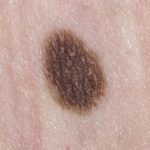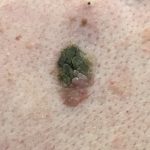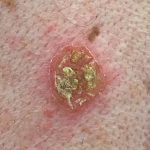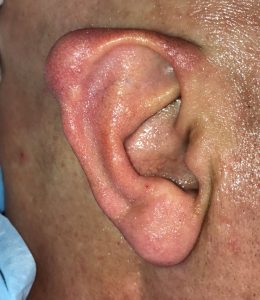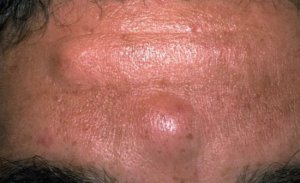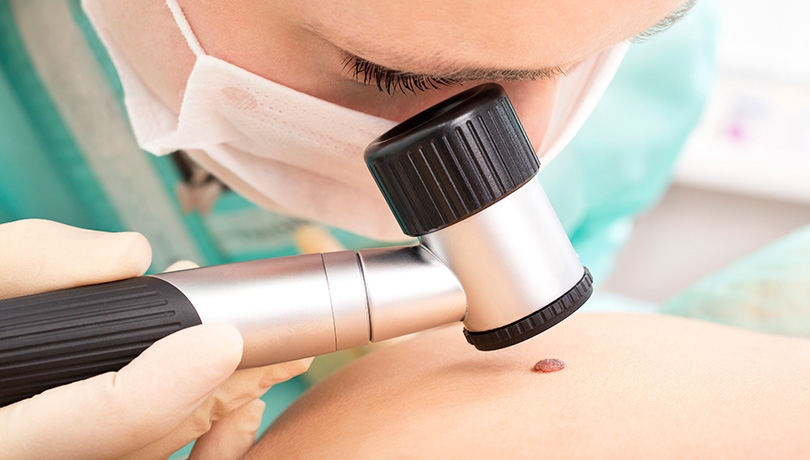
Moles
Moles can vary in size and shape
A mole is a common benign skin lesion formed from pigmented skin cells (melanocytes). They can be brown, black, blue or flesh-coloured. They can vary in size from very small (millimeters) to very large (several centimeters); be flat or raised, and may contain hairs.
A mole can be present at birth (congenital naevus) or appear later, usually in response to sun exposure (acquired naevus). Moles are more common in fair-skinned people. Most people have at least 1 mole, and some people have hundreds.
Are moles dangerous?
Moles are benign, and therefore safe. However, very occasionally, the cells in a mole can start growing bizarrely, causing the mole to change in size, shape or appearance. This can be a harmless process, such as when a mole undergoes normal regression, or can be a sign of a developing cancer: melanoma. Melanoma is a rare but very dangerous form of skin cancer that develops when melanocytes become malignant. People with lots of moles are at higher risk of developing a melanoma in their lifetime.
Possible signs of a developing melanoma include:
- A new mole appearing in adult life
- Change in size, shape, colour or appearance of an existing mole
- A mole that looks different from the rest of the moles on your body
- A mole that becomes itchy, crusted or bleeds
If you have any of these signs, get the spot checked by your doctor.
For more information about melanoma, see Skin Cancer.
Seborrheic Keratosis
“Barnacles of aging”
A seborrhoeic keratosis (SK) is a harmless warty spot that appears during adult life as a common sign of skin aging. They are usually brown, rough, and appear “stuck on” the surface of the skin. Occasionally they can become itchy or irritated, especially if they rub on clothing.
SKs usually start to appear around age 30-40, and tend to increase in size and number as we get older – some people have hundreds. Other common names for these spots include “age spots,” “sun spots,” and “barnacles of aging.”
Because they are usually brown and can change in size and shape over time, they are sometimes mistaken for melanoma, a cancerous growth. Unlike melanoma however, SKs are completely safe. If you have a new or changing brown spot, be sure to get it checked by your doctor, who can help distinguish between the two.
Even though they are harmless, SKs can be somewhat unsightly, especially when large or multiple. You may therefore choose to have them removed by your doctor. This can be done with cryotherapy (spraying with liquid nitrogen), usually over several sessions.
Note: as SKs are safe and removal is cosmetic, this service is generally NOT covered by government health insurance. If you are interested in having your SKs removed, ask your doctor about treatment plans and pricing.
Cysts
Cysts can occur anywhere on the body
A cyst is a benign, round sac beneath the surface of the skin that contains fluid or solid material. Skin cysts commonly form when surface material (dead skin cells, oils, etc) get trapped in the deeper skin layers, where they continue to slowly grow and accumulate debris. They can occur on any skin surface of the body.
Occasionally as it grows a cyst may rupture at the skin surface, oozing pus or debris, or trap skin bacteria and get infected, becoming swollen, red, hot and painful.
Cysts can be removed by your doctor with a small surgical procedure to cut through the overlying skin and remove the entire cyst sac and contents. Occasionally after removal, a cyst may recur; this is more likely to happen if it has previously ruptured, making it more difficult to remove completely.
Note: Cysts are safe. If removal is for cosmetic reasons, this service is generally NOT covered by government health insurance. If you are interested in having a cyst removed, ask your doctor about treatment plans and pricing.






